All that You Need to Know about H.265
H.265 or High Efficiency Video Coding (HEVC) is a new video codec technology. It is a video compression standard that is the successor to H.264 or MPEG-4 AVC (Advanced Video Coding), one of the compression schemes used by Blu-ray. HEVC doubles the data compression ratio compared to H.264 or MPEG-4 AVC at the same level of video quality. That is the compressed video file will be half the size of the video file compressed with H.264. It can also improve the video quality at the same bit rate. H.265 can support up to 8K UHD and resolution up to 8192x4320.

Part 1: Why need H.265?
There are number of professional HD camera out there in the market and the data coming out from those are immense. The size of the video file created with those cameras is large. There must be some convenient way to transport those videos to your home with the same bandwidth that you use for your Internet connection. This can be achieved in many ways. One way, possibly the easiest way, is to compress the data heavily which will eventually reduce the quality of the image. Other way is to find a better compressing technology that will reduce the size without compromising the quality of the image. H.265 is such kind of compression technology that was created keeping in mind the second way. It compresses the UHD video keeping the same quality of the video.
Part 2: History of H.265
In 2004, ITU-T Video Coding Expert Group (VCEG) started the development of the successor to the codec H.264 and in 2007 ISO/IEC Moving Picture Expert Group (MPEG) started their journey to the same direction. In 2010, the MPEG and VCEG teams collaborated on a joint Call for Proposals and established the Joint Collaborative Team on Video Coding (JCT-VC) to develop the HEVC standard. On January 25, 2013 the technical content of HEVC was finalized and on April 13, 2013 it was formally declared as a standard.
Part 3: H.265 Container
Till now, the containers that support H.265 or HEVC are as follows:
- MPEG transport stream – used by ATSC, DVB and Blu-ray Disc. File name extension of this container is .ts, .tsv, .tsa.
- MPEG media transport – an under development digital container standard.
- ISO based media file format –used as the basis for other media file format. File name extensions are .mp4, .3gp, .3g2, .mj2, .dvb, .dcf, .m21
- Matroska – an open standard free container format. File name extensions like .mkv, .mk3d, .mka, .mks
Part 4: H.265 Container
In near future, HEVC will be used by almost every content. It is a matter of decision for service whether to send data using HEVC/H.265 instead of MPEG-4/H.264. Many companies have already begun to use HEVC for streaming 4K content. Netflix, Amazon, M-Go are few of them. Netflix has begun to use HEVC to stream 4K content to few 4K TVs equipped to decode HEVC. Leading television manufacturer like LG, Samsung, Sony, Vizio, Panasonic and Toshiba will manufacture TVs with HEVC support and those TVs will be able to stream 4K content.
Amazon has amalgamated with few other studios like Warner Bros, Lionsgate, 20th Century Fox and Discovery for streaming 4K content using HEVC. Streaming service M-go has also announced the same via an app for Samsung TVs.
Though cable companies are not broadcasting 4K yet, they will decide it in upcoming years. DirectTV and Comcast's Xfinity will use an app to stream 4K content over the Internet to Samsung TV.
Some new smartphone like Sony Xperia Z2 has included HEVC support to shoot 4K video.

Part 5: How to Play H.265 file
Here is a list of the top 3 players that can play HEVC files:
- Wondershare Player
- DivX Player
- VLC Media Player
1. Wondershare Player
Wondershare Player is a powerful media player and a wonderful solution for playing HEVC files. It provides seamless support to a wide range of audio and video format.
Features
Let's look at the salient features of Wondershare Player:
- It is capable of playing MPEG, MKV, WMV, AVI and many other formats in high quality.
- It can load and play subtitle files in ass, ssa and srt.
- It can also customize subtitle size, color and others.
- It takes less memory to play high quality video.
- GPU hardware optimization greatly enhances best-in-class video performance.
- Playlists are automatically organized.
- Can bookmark favorite online video clips.
- Allows automatic shutdown after playback.
2. DivX Player
DivX player is another robust HEVC video file player. It is an award winning software that offers HEVC playback. It offers high-quality playback of movies, TV shows. It supports almost all the popular formats like AVI, DIVX, MKV, MP4 and more. By using its DivX Media Server one can stream music, video and photos to any DLNA-compatible device at home like PS3, XBOX, or Samsung Galaxy line of product. With the Stream To feature in player user can also control which device they can stream their videos to.
Features
The salient features of DivX Player are:
- It supports video up to 4K.
- Supports multi-language subtitle and easy switching between the subtitles.
- Supports multiple audio tracks.
- Smooth FF/RW allows quick navigation to the desired scene.
- Can access different scenes with just the push of button.
- Can stream videos, music and photos to any DLNA-compatible device.
- Can keep track of the purchased DivX content.
3. VLC Media Player
Another player that can play HEVC file is the VLC Media Player, which is a free and open source player and framework. It supports a wide range of multimedia files. It can also play DVDs and various streaming protocols.
Features
The salient features of VLC media player are as bellows:
- It is simple, fast and powerful media player.
- Plays most codecs MPEG, DivX, MKV, WebM, WMV, MP3 and many more
- It runs on all platforms including Windows, Mac OS X, Linux, Unix.
- It can perform media conversion and streaming
- Absolutely free
- No spyware, no ads and no user tracking.
Part 6: How to Convert H.265 Files to other format
To convert H.265 files to other format you will need a powerful and reliable converter. Wondershare Video Converter Ultimate is one of them. Wondershare Video Converter Ultimate is available for both Windows and Mac OS X. You can also download a trial version of the converter. The salient features of Wondershare Video Converter Ultimate are:
- Provides 30x faster conversion than any other conversion tools available in the market.
- It can convert a video file to virtually any format.
- Can transfer the converted video files to other device using Wi-Fi network.
- Can burn video files to DVDs.
- Can also edit video file before conversion.
- It can also download YouTube video with just one click.
Let's see step by step procedure to convert H.265 files to other format.
Step 1 Download and Launch Wondershare Video Converter Ultimate
Download it from below and install Wondershare Video Converter Ultimate on your computer and launch it.
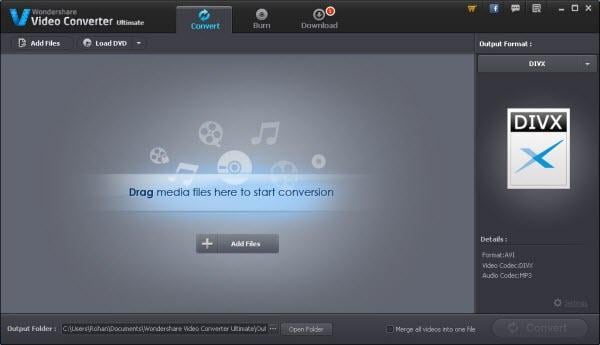
Step 2 Add/Import files to the converter
Select the Convert tab if it is not already selected. You can add/import files in two different ways. First way is by clicking on the Add files button at the upper-left side or at the center of the pane.
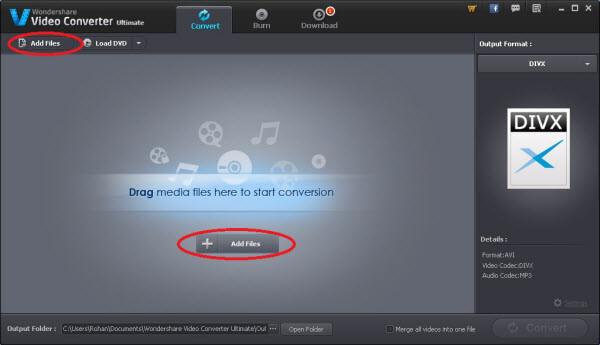
A new Open window will appear. From there you can browse and choose the video file saved on your computer. The second way is even easier. Just open the directory containing the video file and then simply drag it from the directory and drop it on the software pane. You can also add multiple files at a time.

Step 3 Choose the output format
Now you will need to choose the output format of your preference. You can do this by clicking the Output Format drop-down list at the right side of the pane. Wondershare Video Converter Ultimate supports a wide range of format to convert your H.265 file. You can also convert your video files for a device of your choice.
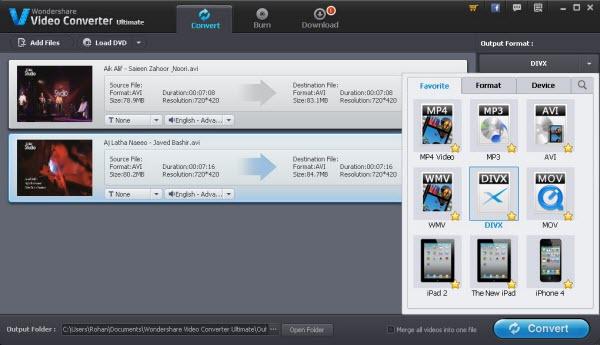
Step 4 Complete the conversion
Now you will just have to click on the Convert button at the bottom-right corner of the screen. Wait until the conversion is complete. Time to complete the conversion will always depend on the size and number of files that you are converting.
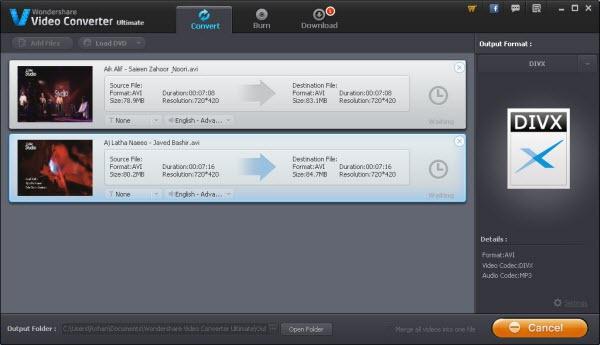
Once the conversion is complete you can find the location of the converted files by clicking on the Open Folder button at the bottom of the screen. You can also change the location from there before the conversion.
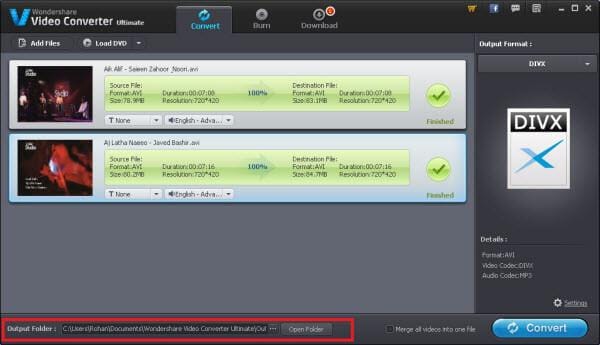
Note: You can also convert other videos to H.265 files with Wondershare Video Converter Ultimate. All you need to do is to change the codec in Setting to H.265 when you are converting a video to MP4 or other format that supports H.265.
Part 7: H.265 VS H.264
| Type | H.264 | H.265 |
|---|---|---|
| Name | MPEG- 4 AVC (Advanced Video Coding) | HEVC (High Efficiency Video Coding) |
| Successor | Successor to MPEG-2 Part | Successor to MPEG-4 AVC/ H.264 |
| Improvement | Bit rate reduction compared to MPEG-2 is 40-50% | Bit rate reduction at the same level of visual quality compared to H.264 is 40-50% |
| Resolution | Supports up to 4K (4,096x2,304) | Supports up to 8K (8,192x4,320) |
| Frame rate | Supports up to 59.94 fps | Supports up to 300 fps |
| Profiles | 21 approved profiles | 3 approved profiles, draft for additional 5 |
| Entropy Coding | Entropy coding is CABAC and CAVLC | Entropy coding is only CABAC |
| Compression Model | Hybrid spatial-temporal prediction model | Enhanced Hybrid spatial-temporal prediction model |
| Industry Adoption | Dominant and accepted video codec for cable, terrestrial, satellite and IPTV broadcast. Widely used across Blu-Ray, security systems, video conference, mobile video, media players, video chat etc. | Implementation demonstration across NAB, IBC, and other events starting 2012 companies e.g. ATEME, Broadcom, Thomson, Harmonic, Ericsson, Qualcomm etc. Increased RD across encoder/decoder vendors for software and hardware based solutions. |
| Year of Approval | Approved in 2004 | Approved in 2013 |
| Drawbacks | Transmission of UHD content is unrealistic as the bit rate requirement is very high. | Approx. 300% more computational expensive due to larger prediction units and expensive Motion Estimation. |
Part 8: H.265 VS VP9
VP9 or Video Processing 9, the successor to VP8, is an open and loyalty free video compression standard developed by Google. It is the Google's latest open source project whose target is to improve the delivery of content over the Internet. It is expected to reduce the size of the video files to half, comparing the current encoding technology called H.264 or MPEG-4. It will be used to compress video files and stream at 4K resolution.
Google has already announced that VP9 will be used for 4K content on YouTube. Google Play is also likely to use VP9 for streaming video service. When each individual service will have decided to send content using VP9, there must be some compatible hardware to run that content – which will be the big challenge for VP9. Google has already partnered with some companies like Intel, ARM, Broadcom, Marvell, Nvidia, Qualcom, RealTek, MediaTek, and Sigma for manufacturing VP9 compatible chips and components.
So it's reasonable that we should compare H.265 and VP6. The comparison between the two video encoding standards are listed below
| Type | VP9 | H.265 |
|---|---|---|
| Name | Video Processing 9 | HEVC (High Efficiency Video Coding) |
| Successor | Successor to VP8 | Successor to MPEG-4 AVC/ H.264 |
| Developer | Developed by Google as an open and free video compression standard | Jointly developed by Video Coding Expert Group (VCEG) and Moving Picture Expert Group (MPEG). |
| Improvement | Bit rate reduction compared to VP8 is 40-50% | Bit rate reduction at the same level of visual quality compared to H.264 is 40-50% |
| Resolution | Supports up to 8K (8,192x4,320) | Supports up to 8K (8,192x4,320) |
| Performance Comparison | VP9 takes seven times less time to encode | H.265 achieved 43.3% lower bit rate then VP9 |
| Profiles | two approved profiles | three approved profiles, draft for additional five |
| Industry Adoption | Google has already announced that VP9 will be used for 4K content on YouTube and Google Play Video service. Google has already partnered with some companies like Intel, ARM, Broadcom, Marvell, Nvidia, Qualcom, RealTek, MediaTek, and Sigma for manufacturing VP9 compatible chips and components. | Implementation demonstration across NAB, IBC, and other events starting 2012 companies e.g. ATEME, Broadcom, Thomson, Harmonic, Ericsson, Qualcom etc. Increased RD across encoder/decoder vendors for software and hardware based solutions. |
| Year of Origin | Initial release December 13, 2012 | Approved in April, 2013 |
| Drawbacks | Transmission of UHD content might be a big challenge as the bit rate requirement is very high comparing to H.265 | Approx. 300% more computational expensive due to larger prediction units and expensive Motion Estimation. |
Rayburn from Frost & Sullivan sated that HEVC can't be deployed until the full encode, decode and transport infrastructure is designed. The good news is that some major companies have already begun to adopt H.265. There were a lot of grumblings during the evolution of H.264 and the same will be true for H.265. H.265 will also have to face challenges from its competitor VP9. Above all, a lower data rate with the same quality is good for everything.














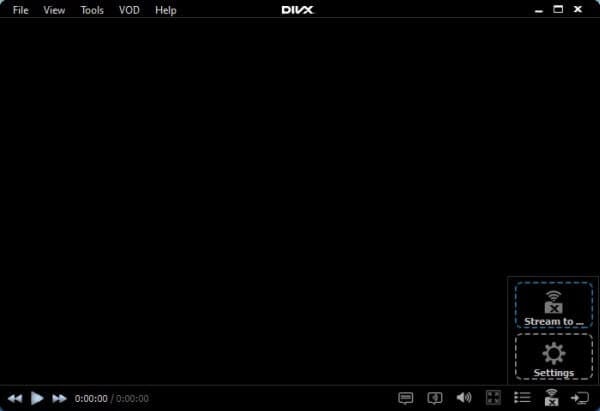


Hi have installed the latest Wondershare Video Converter Ultimate but still don't have h265 offered as encoder in settings
Typo here: "So it's reasonable that we should compare H.265 and VP6" Very informative, thank you.
I was wondering what devices (instead of a PC) can play the new format
Sorry Jim, i haven't done the test myself and only find the data from the internet.
Thanks for the article, can I ask what this statement "H.265 achieved 43.3% lower bit rate then VP9" is based on? Were tests run that I can duplicate? Thanks in advance.